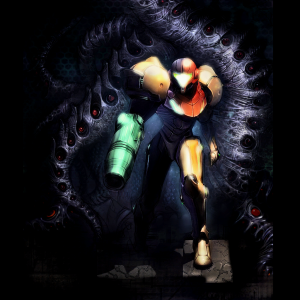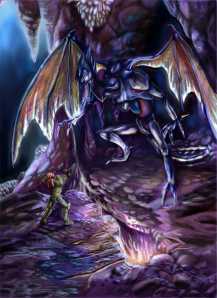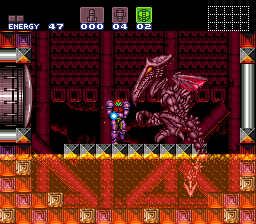Metroid Prime 2: Echoes has often been considered one of the black sheep in the series (no pun intended). A coupling of onerously long levels with forced backtracking through the dull environments of Dark Aether made for a game that, while featuring a strong atmosphere of decay and despair, lacked in the polished gameplay the series was known for. The game’s soundtrack was also mostly miss, with plenty of dull, atmospheric minimalist pieces for the Dark World and droning or whining pieces for Light Aether. However, some of these tracks, particularly “Torvus Bog“, have become favorites among mixers. The best of these is “Torvus Bog” by Metroid Metal.

Metroid Prime 2 – “Torvus Bog” (arr. Metroid Metal)
I have to say I am a sucker for Metroid Metal music – but that’s ok, considering their work is very good, in some places serving almost superior to the original. “Torvus Bog” is one of these cases; Grant Henry took Kenji Yamamoto’s original piece and picked up the tempo for a more active song with wailing, melancholic guitars that brood the vibes of the swamp (and again, it is this atmosphere that draws me so much to this arrange). Whereas the original piece contained atmosphere for the rain, swamp water, sloshing ground, and muck of the bog, the Metroid Metal rendition is energetic, forceful, immediately dumping you straight into the swamp. The drums keep time, sticks like a ticking clock, and the guitars sing their long notes that ooze through the speakers, immersing the space between in a melodic soup that seems to stretch beyond the boundaries of the walls. There’s a nice break at 2:44 and again at 3:19 of mostly new material that’s thematically linked to the rest of the song, the bass serving progressive four-note base. After this, the track presses onward with the final refrain, mournful wails on the guitar that build to an epic, drum-filled finale. This is awesome stuff and one of my favorite tracks that Metroid Metal has done.
DarkeSword (Shariq Ansari) has also made a notable “Torvus Bog” mix, “Torvus Clockwork“, which integrates the Submerged Temple theme with the Bog (and halfway through waterlike piano arrange of the “Main Theme”). There is an excellent layering of the different themes, supported by the ever-present industrial pounding and slurred hiss of the percussion. Definitely worth checking out, but doesn’t possess the sheer emotion I find behind Metroid Metal’s version.
Actually, there’s another awesome metal mix too, this time by Vangough (Clay Winthrow). “Torvus Bog” here is actually an arrange of both the “Title Theme” and “Torvus Bog” in one epic 7-minute song. Vangough is an expert guitarsman in the making, and mixes his work with pianos and synth choir. The melody of “Torvus Bog” is carried mainly by a whistling synth that sounds just like the one out of the game. As such, this arrange is more faithful to the original, retaining the haze and dampness of the original, but always supported by that epic guitar. I actually place it second to Metroid Metal’s version, though nothing to the detriment of Vangough’s work. The album is $10, and it’s a nice selection of some popular and rarely-heard themes. (Sorry man, I still owe you an album review, but I been helluva busy!).








